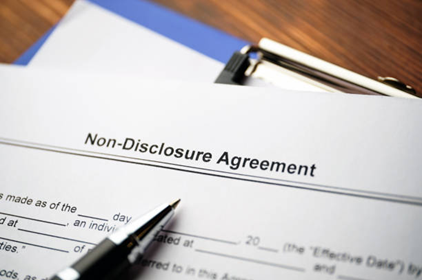- Hyderally & Associates P.C | Employment Lawyers NJ, NY
- (973) 509-8500
- tyh@employmentlit.com
President Signs Coronavirus Relief Package into Law
Your Job Offer Is Rescinded Due to COVID-19 – What Now?
March 23, 2020Can I Refuse to Go to Work During the COVID-19 Outbreak?
March 27, 2020By Lía Fiol-Matta, Esq. and Ty Hyderally, Esq.
During these trying times of national pandemic involving the Coronavirus or COVID 19, it is important for employees to understand their workplace rights as working conditions for most employees have changed dramatically. On March 18, 2020, President Trump signed into law a coronavirus relief package that includes provisions for free testing for COVID-19 and paid emergency leave. The bipartisan legislative bill, H.R. 6201: Families First Coronavirus Response Act (FFCRA) contains a number of provisions, including two types of paid leave: Two Week Paid Emergency Leave and FMLA Emergency Leave. The FFCRA covers all private employers with up to 500 employees and all public employers. It will go into effect on April 2, 2020. Both leave provisions will end December 31, 2020, unless otherwise amended.
There are several qualifying reasons for coverage under this bill:
- The employee is subject to a federal, state, or local quarantine or isolation order;
- The employee has been advised by a health care provider to self-quarantine;
- The employee is experiencing symptoms of COVID-19 and seeking medical diagnosis;
- The employee is caring for an individual who is subject to a federal, state, or local quarantine order, or the individual has been advised to self-quarantine due to concerns related to COVID-19;
- The employee is caring for the employee’s son or daughter, if the child’s school or child care facility has been closed or the child’s care provider is unavailable due to Covid-19 precautions.
The legislation will provide paid emergency leave with two weeks of paid sick leave (80 hours) for full-time employees at their regular rate of pay (capped at $511 per day or $5,110 total) if workers are being tested, diagnosed or treated for coronavirus. Part-time employees are entitled to leave for the hours they work on average during a two-week period, and are entitled to pay at their regular rate or two-thirds of their regular rate, depending on the reason for leave. In addition, workers with family members affected by coronavirus and those whose children’s (under the age of 18) schools have closed will receive up to two-thirds of their pay, limited to $200 a day or $10,000 total. It is noteworthy that these benefits apply to all workers regardless of how long they have been employed, including the newly hired.
The FFCRA also expands the existing provisions of the Family and Medical Leave Act, 29 U.S.C. 2601 (FMLA) to provide for “public health emergency leave.” Employees who cannot be at work due to federal, state, or local recommendations because they have symptoms associated with COVID 19, or who are instructed to quarantine, are eligible for this leave, as well as employees who need to care for a family member who is at home for the same reasons. Employees unable to work or employees who work from home due to a need to care for the employee’s child, or employees who have a child where their school or place of care has been closed because of a declared emergency by a government authority, will also be eligible for this leave. The only pre-eligibility requirement is that employees (full-time and part-time) must have been employed by an employer for at least 30 days.
The bill provides employees with up to 12 weeks of leave. The entitlement goes into effect after 10 days of unpaid leave. During the first 10 days of leave, the employer can require that employees substitute accrued vacation leave, personal leave, sick leave, or any other form of paid time off. The employer can also mandate that employees use the two weeks of emergency paid leave that are provided by the FFCRA. The remaining 10 weeks will be paid at two-third the worker’s regular pay. The FFCRA’s family leave provision provides workers with an extension for up to another 10 weeks only if their children’s schools are closed.
The FFCRA also includes $1 billion to help states with administrative costs of processing unemployment insurance and will expand funding for Medicaid.
The FFCRA allows the Department of Labor to exempt employers with less than 50 employees if compliance with the paid leave provisions would jeopardize the viability of the business. Employers cannot retaliate against an employee who takes advantage of emergency paid leave or who has filed a complaint related to the taking of such leave. Employers are also prohibited from forcing an employee to find a replacement to cover the leave.
If you have questions on the new paid leave provisions under the FFCRA, we are here to help you understand your rights.
This blog is for informational purposes only. It does not constitute legal advice, and may not reasonably be relied upon as such. If you face a legal issue, you should consult a qualified attorney for independent legal advice with regard to your particular set of facts. This blog may constitute attorney advertising. This blog is not intended to communicate with anyone in a state or other jurisdiction where such a blog may fail to comply with all laws and ethical rules of that state of jurisdiction.

